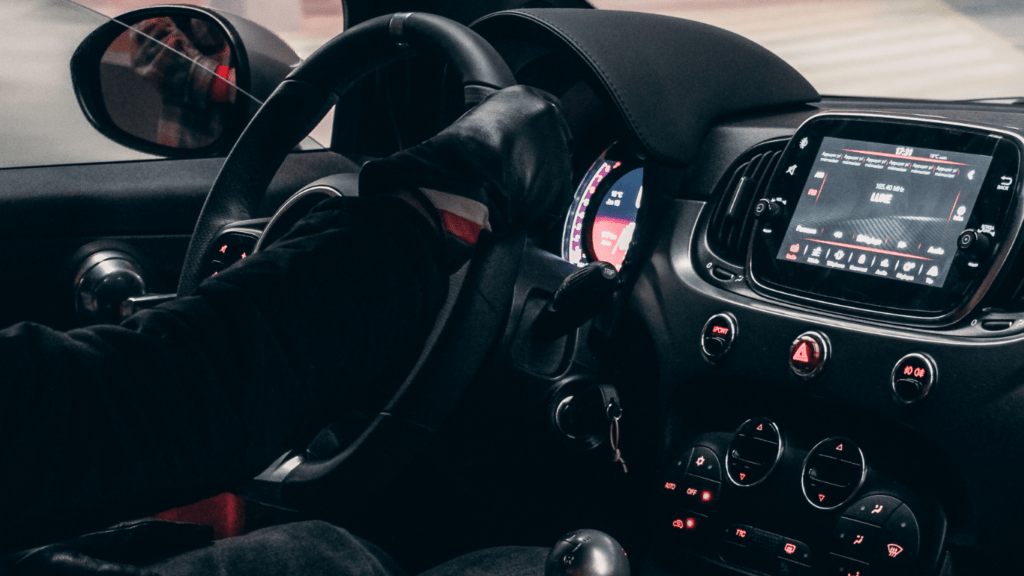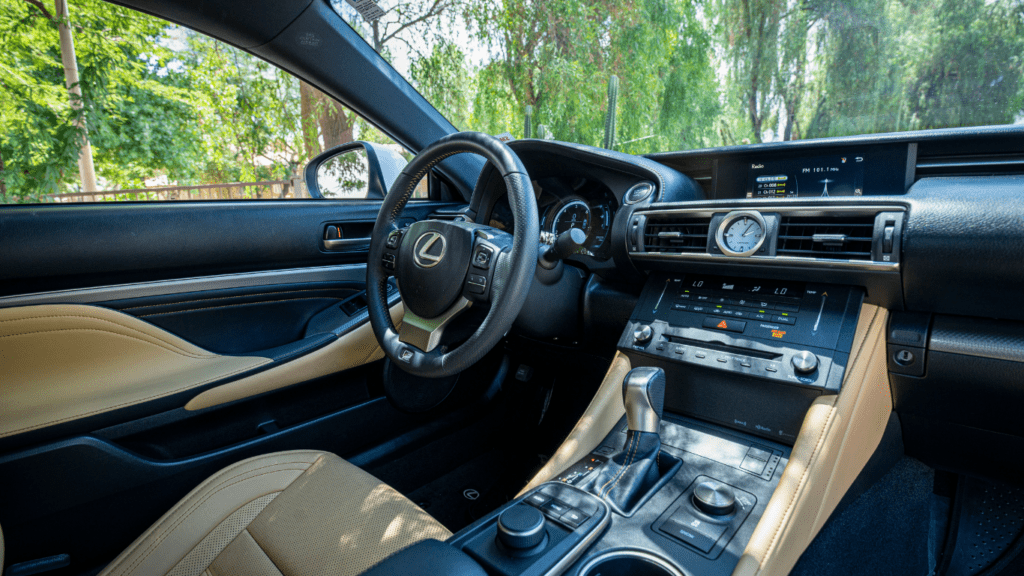Overview of In-Car Entertainment Systems
In-car entertainment systems have traveled a long way from simple radios to sophisticated multimedia setups. Modern systems integrate audio, video, navigation, and internet connectivity into a seamless experience. Manufacturers focus on creating interactive environments, utilizing touchscreens and voice commands to keep interfaces user-friendly.
Audio and Video Integration
Modern setups often include high-definition monitors, surround sound, and Bluetooth connectivity. These features provide a cinema-like experience. For example, many vehicles now offer rear-seat entertainment packages, which include screens mounted behind front-seat headrests.
Navigation Systems
Advanced GPS navigation systems offer real-time traffic updates and route suggestions. They often integrate with smartphone apps to provide additional functionalities. For instance, many systems sync with Google Maps or Apple Maps to offer current traffic conditions.
Connectivity
Seamless integration with smartphones lets drivers and passengers access music, apps, and calls. Apple’s CarPlay and Android Auto are popular platforms. These systems mirror the phone’s interface on the car’s dashboard screen, offering intuitive controls and minimizing distractions.
Internet Access
In-car Wi-Fi hotspots enable internet access for multiple devices. This feature transforms the vehicle into a mobile office, allowing occupants to stream videos, browse the web, and check emails. Many systems provide LTE connectivity, ensuring a stable internet connection on the move.
Voice Control
Voice-activated controls reduce the need for physical interaction with the system. Amazon’s Alexa and Apple’s Siri are examples integrated into many vehicles. These systems allow drivers to manage calls, music, and navigation using voice commands while keeping their focus on the road.
Augmented Reality Displays
Some advanced vehicles feature augmented reality (AR) displays. These overlays provide real-time data, such as navigation directions and hazard alerts, directly onto the windshield. This technology enhances situational awareness without distracting the driver.
Safety Considerations
Incorporating safety features in entertainment systems is crucial. Many include alerts for drowsiness, lane departure, and collision warnings. These systems use sensors and cameras to monitor the vehicle’s surroundings and alert drivers to potential hazards.
Manufacturers continuously innovate to improve the in-car experience. The goal is to make driving more enjoyable and safer by integrating diverse technologies.
Top Features to Look for in 2023

In 2023, in-car entertainment systems offer features that transform driving into an immersive experience. Focused on enhancing convenience and enjoyment, these features redefine on-the-road entertainment.
Advanced Audio Systems
Audio quality stands out as a priority in modern vehicles. Premium sound systems from brands like Bose, Bang & Olufsen, and Harman Kardon offer rich, immersive audio experiences. These systems often feature:
- Surround Sound Technology: Delivers high-fidelity audio, creating a theater-like environment.
- Noise Cancellation: Actively reduces road noise for clearer sound.
- Multiple Speaker Configurations: Enhances audio precision, offering setups with 10 or more speakers.
Touchscreen Interfaces
Modern touchscreen interfaces have evolved to be more user-friendly and interactive. Key advancements include:
- High-Resolution Displays: Provide clear, crisp visuals for easier navigation and media control.
- Haptic Feedback: Adds a tactile response to touch commands, improving interactivity without distraction.
- Multifunctional Controls: Consolidate audio, navigation, climate control, and phone integration into one interface.
Connectivity Options
Connectivity remains a cornerstone of in-car entertainment systems in 2023. Essential connectivity features include:
- Wireless Smartphone Integration: Platforms like Apple CarPlay and Android Auto offer seamless integration without the need for cables.
- Built-in Wi-Fi Hotspots: Enable internet access for multiple devices, ensuring connectivity on the go.
- Bluetooth and USB Ports: Support various audio formats and provide versatile connection options for different devices.
Incorporating these advanced features ensures that drivers and passengers enjoy a holistic entertainment experience, combining convenience, safety, and innovation directly from their vehicles.
Leading In-Car Entertainment Brands
Prominent brands dominate the in-car entertainment market, offering varied features to enhance the driving experience. Key players like Apple CarPlay and Android Auto set high standards in connectivity and usability.
Apple CarPlay
Apple CarPlay integrates seamlessly with iPhones, enabling drivers to access music, navigation, calls, and messages using their vehicle’s display. Siri voice control allows for safe, hands-free operation. Apple CarPlay supports apps like Apple Music, Maps, and third-party options such as Spotify and Waze. Regular updates enhance compatibility and introduce new features.
Android Auto
Android Auto provides a similar experience for Android users, connecting smartphones to the car’s dashboard display. Google Assistant offers voice control, enabling drivers to manage apps, messages, and calls safely. Android Auto supports Google Maps, Google Play Music, and third-party apps like WhatsApp and Audible. Frequent updates keep the system current, adding functionality and improving performance.
Other Notable Brands
Several other brands contribute significantly to in-car entertainment systems. Bose and Harman Kardon are known for advanced audio systems with high-fidelity sound, surround sound technology, and multiple speaker configurations. Pioneer and Kenwood offer head units with customizable interfaces, high-definition displays, and extensive connectivity options.
Sony provides systems with integration capabilities, supporting both Apple CarPlay and Android Auto. New entrants like Tesla focus on integrating entertainment with vehicle functionality, offering streaming services directly on the car’s display. These brands continually innovate, enhancing the driving experience with superior sound, connectivity, and usability.
Recent Innovations in In-Car Entertainment
Recent advancements in in-car entertainment are making driving both more enjoyable and safer. These innovative features incorporate cutting-edge technology to provide seamless connectivity and enhanced user experiences.
Voice Control
Voice control systems have evolved significantly, offering hands-free operation and reducing distractions. Apple’s Siri and Amazon’s Alexa integration in vehicles exemplify this trend. Drivers can manage navigation, make calls, send messages, and control media by simply speaking. This minimizes the need for manual interactions, enhancing safety. Natural language processing improvements ensure these systems understand and execute commands more accurately. With voice control, interactions become intuitive and efficient, allowing drivers to stay focused on the road.
Augmented Reality Dashboards
Augmented reality (AR) dashboards represent a leap forward in vehicle displays. These systems project real-time information directly onto the windshield. Data such as navigation cues, speed limits, and hazard alerts are overlaid onto the driver’s view. This innovation enhances situational awareness without requiring drivers to look away from the road. Brands like BMW and Mercedes-Benz have implemented AR dashboards that seamlessly integrate with other in-car systems, providing a cohesive and informed driving experience. Enhanced with intuitive visuals, these dashboards aim to make driving not only safer but also more immersive.
User Experience and Feedback
User feedback shapes the evolution of in-car entertainment systems, revealing both strengths and weaknesses.
Pros and Cons
In-car entertainment systems bring numerous advantages, but they also have some drawbacks. High-definition screens and surround sound systems immerse users in premium entertainment, rivaling home setups. Features like voice control, smartphone connectivity, and AR displays enhance safety and convenience.
However, issues like system lags, complicated interfaces, and software compatibility problems can detract from the user experience. Regular software updates, while beneficial, sometimes introduce new bugs. Overall, the integration of various technologies offers a rich driving experience, though some kinks remain.
Customer Reviews
Customer reviews provide insight into real-world usage of in-car entertainment systems. Many users praise the high fidelity of sound systems from brands like Bose and Harman Kardon, stating that their audio quality surpasses expectations. Touchscreen interfaces, like those in Tesla vehicles, receive positive feedback for their responsiveness and intuitive design.
On the downside, some users report frustrations with voice control systems, especially when natural language processing fails to recognize commands accurately. Reviews consistently highlight the importance of seamless connectivity, with Apple CarPlay and Android Auto receiving plaudits for their reliable performance. Concerns about system updates introducing new issues are also common, emphasizing the need for better quality control in software rollouts.




